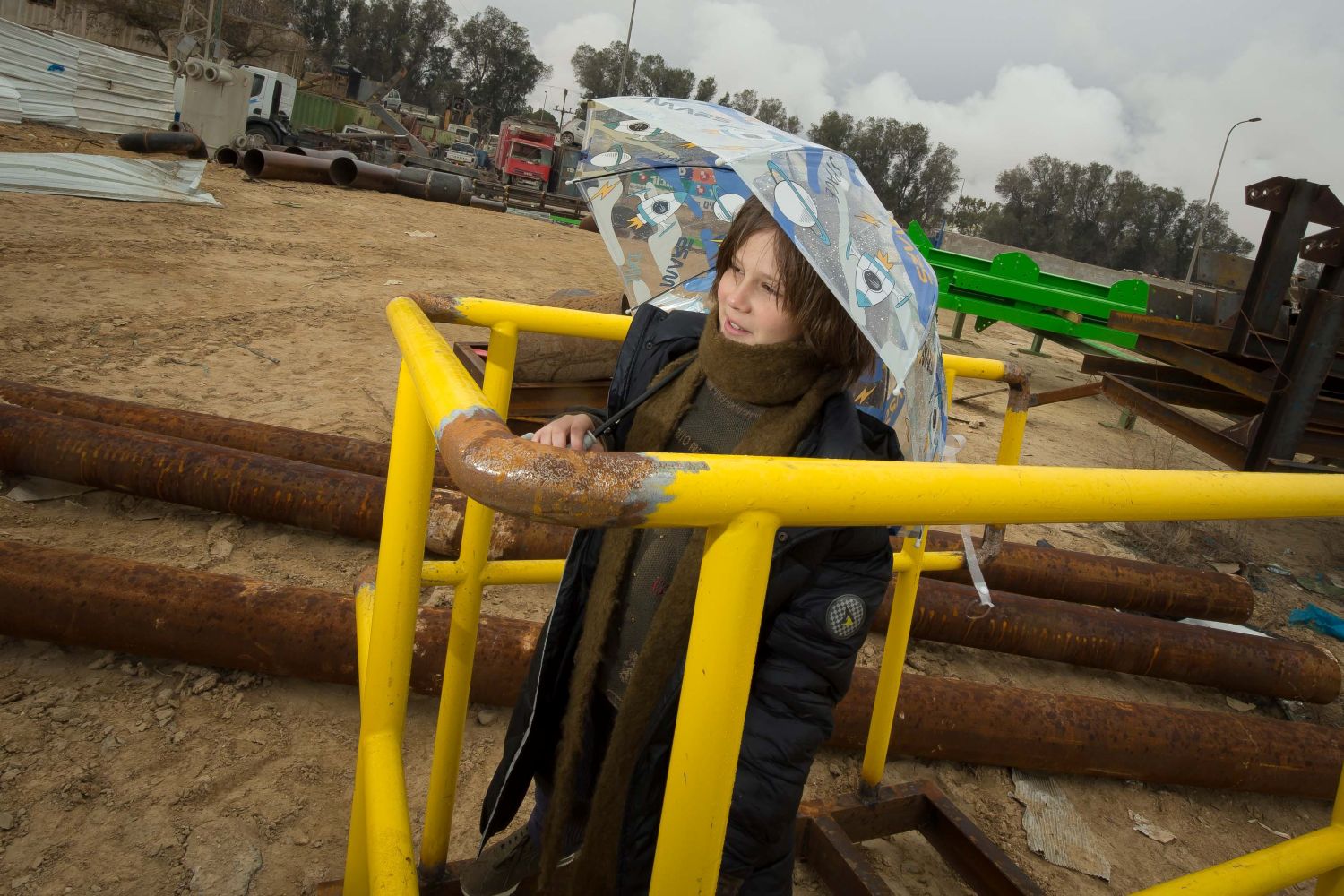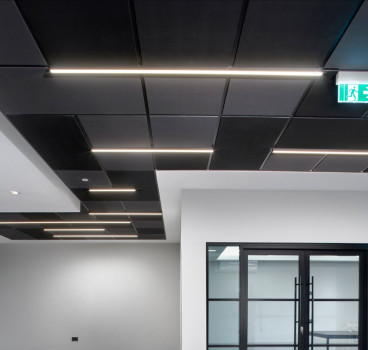The race to zero waste and what construction can learn from the fashion industry
The fashion industry has long been a cautionary tale for unsustainable practices. Rapid production cycles, overconsumption and a relentless demand for novelty have created mountains of textile waste, pollution and ethical challenges. In the UK alone, it is estimated that over one million tonnes of clothing end up in landfill each year, with much of it perfectly reusable or recyclable. Fast fashion has forced a reckoning where brands and consumers alike are being asked to rethink how they design, manufacture, and dispose of products. Construction faces a strikingly similar challenge, writes John Ridgeway.
In the building business, material waste is endemic with offcuts, packaging, mis ordered items and over-specification accounting for billions of pounds in lost value annually. Concrete, timber, metals, plastics and insulation materials are regularly discarded despite being usable elsewhere. However, just as fashion has discovered, treating waste as a design flaw rather than an inevitability is a critical first step – and we, in our industry, could learn from that process.
In fashion, zero-waste design starts on the drawing board. Pattern cutting, modular garment design and multi-use fabrics are all techniques to eliminate waste before production even begins. The principle is simple - if you plan intelligently, there’s less to throw away.
Construction can adopt the same mindset. Modular design, off-site manufacturing and precision cutting of materials reduce waste at the source. Designing buildings with standardised components, adaptable floorplans and reversible construction systems means less surplus material and more flexibility for future changes. Digital tools, including BIM and 3D modelling, allow architects and contractors to visualise and optimise material usage before a single plank is delivered.
Zero-waste construction doesn’t mean compromising creativity. Just as fashion designers have learned to make bold statements while adhering to efficient cutting layouts, architects can embrace innovative forms and finishes without generating unnecessary debris. It’s a balance of imagination and practicality.
Supply chain collaboration
The fashion industry’s move toward sustainability demonstrates the importance of end-to-end supply chain engagement. Brands that track materials from fibre to finished garment, work with suppliers to reduce offcuts and implement take-back schemes see tangible reductions in waste and cost. Transparency and collaboration are essential.
For construction, the lesson is equally clear. Contractors, architects, engineers and suppliers need to work together from project inception to handover. Standardised packaging, returnable pallets, and coordinated delivery schedules reduce excess materials onsite. Suppliers can design products for disassembly or recycling, enabling closed-loop systems similar to textile take-back programmes. When everyone in the chain shares responsibility for material efficiency, zero-waste targets become achievable.
One of the most significant lessons from fashion is the adoption of circular economy principles. Materials are no longer “used once and discarded”; they are treated as assets with ongoing value. Brands invest in recycling, repurposing, and resale to extend product life. Clothing rental services, upcycling initiatives and resale marketplaces have grown in response to both consumer demand and regulatory pressure.
Construction can apply circular economy thinking at scale. Deconstructed buildings can feed material back into new projects. Timber can be repurposed, steel can be melted down and reformed, and concrete aggregates can be reused in foundations. Designing for deconstruction - ensuring components can be separated cleanly and reused - transforms waste into a resource rather than a liability. Incentives for material recovery, combined with digital tracking of assets, make this approach both practical and profitable.
Digital technology has been a game-changer in fashion sustainability, from AI-powered demand forecasting to 3D garment simulation. These tools reduce overproduction, avoid excess inventory and allow precise planning.
In construction, this technology offers parallel opportunities. BIM provides real-time visualisation of material usage, clash detection and optimisation of construction sequences. AI and predictive analytics can forecast ordering needs and prevent overstocking. Digital twins of buildings allow teams to simulate construction and maintenance, minimising errors that would otherwise result in waste. The lesson is clear - the more precisely we can plan and simulate, the less material we throw away.
Cultural change and training
Fashion’s shift toward zero waste has required a cultural transformation. Designers, cutters and suppliers have had to learn new skills and adopt new processes. Sustainability metrics are now embedded into KPIs and decision-making frameworks.
Construction faces a similar challenge. Tradespeople, site managers and designers must internalise waste reduction as a core value. Training programmes that emphasise material efficiency, recycling practices and circular design principles can embed a culture of zero waste across the workforce. Incentives for reducing site waste, combined with recognition for innovative approaches, encourage teams to embrace these new practices.
Fashion brands are increasingly held accountable by regulation and consumer scrutiny. Eco-labels, disclosure requirements and environmental taxes have made waste reduction not just ethical but commercially necessary.
Construction is experiencing comparable pressures. Governments are setting ambitious targets for waste reduction, carbon neutrality and circularity. Compliance with environmental standards can reduce fines and unlock incentives, while reputational benefits improve market competitiveness. Developers and contractors that prioritise zero-waste design position themselves ahead of regulatory and client expectations, creating a commercial as well as an environmental advantage.
Critically, both fashion and construction show that waste prevention is not a cost - it is a profit opportunity. Avoiding over-ordering, reclaiming offcuts and reusing materials reduces disposal costs and purchasing requirements. In fashion, cutting less fabric per garment directly improves margins. In construction, careful planning, modular design and material tracking can save millions per large-scale project.
The financial argument is compelling. Forward-thinking firms recognise that investing in sustainable design, circular systems, and technology doesn’t just prevent waste - it increases efficiency, reduces risk and protects reputation. Clients increasingly demand this approach, rewarding builders who demonstrate environmental stewardship alongside craftsmanship.
Learning from fashion’s mistakes
Perhaps the most important lesson from fashion is knowing what not to do. Fast, disposable, and uncoordinated production creates waste that is costly, environmentally damaging and reputationally hazardous. Construction has long tolerated similar inefficiencies: over-ordering, poor storage, offcuts and ad hoc site changes. By studying fashion’s missteps, the industry can proactively adopt systems that eliminate waste, rather than reacting to its consequences.

Mistakes in fashion are visible and public - in construction, waste is often hidden in skips, spoil heaps, or anonymous landfills. Yet the environmental and economic consequences are no less severe. Addressing these inefficiencies now, before regulations tighten further, is both responsible and strategic.
All this means that zero waste in construction is achievable, but only if the industry embraces the lessons of fashion. This means integrating design, technology, supply chain collaboration and cultural change into every project. It means treating materials as assets, not disposable commodities. And it means investing in planning, training and digital tools that make precision, reuse and recycling standard practice.
The parallels with fashion are clear - inefficiency and waste are expensive and environmentally destructive, but intelligent design, collaboration and technology can transform the business model. Construction, like fashion, can shift from linear to circular, from reactive to proactive and from wasteful to regenerative.
In the race to zero waste, the stakes are high - environmentally, economically and socially. But by learning from industries that have already grappled with similar challenges, construction can achieve what fashion is still striving toward - a system where materials, processes and people work in harmony and waste is no longer an inevitability, but a preventable outcome.
Additional Blogs

When fire breaks out who really knows the system
The story that caught my attention recently wasn’t about fire growth or building loss, it was about confusion. Specifically, the confusion faced by the fire service when arriving at buildings...
Read moreThe design and development of Nexus Layouts
When Zentia set out to rethink the suspended ceiling, the brief was clear: deliver greater creative freedom for designers, more distinctive visual identity for clients, and a solution that could keep...
Read more

The 100-year construction project or why longevity Is the new sustainability
For decades, the construction sector has defined sustainability through metrics such as operational energy, embodied carbon, material efficiency and circularity. These measures remain vital, but a...
Read more